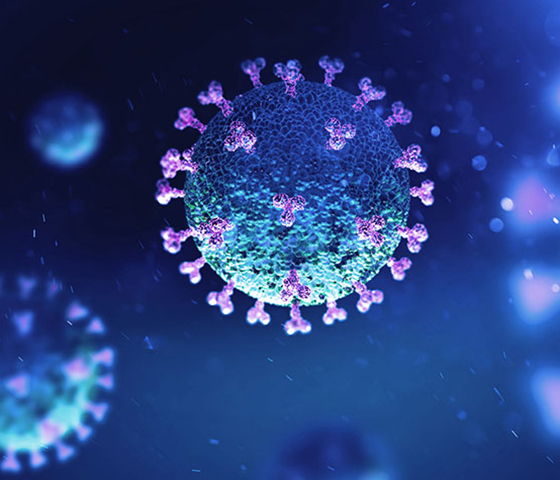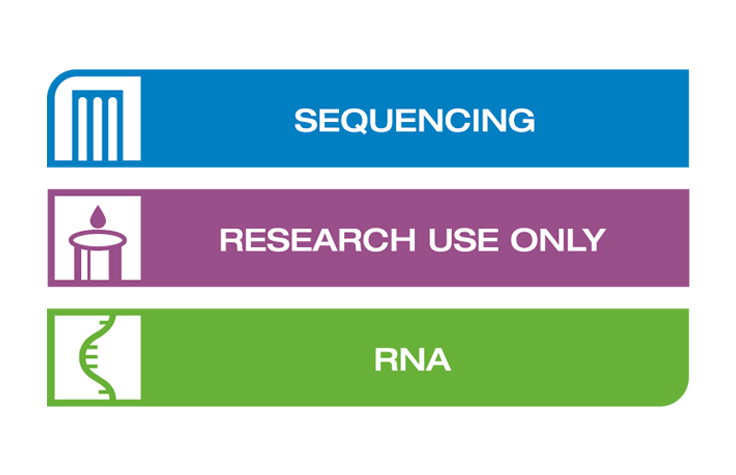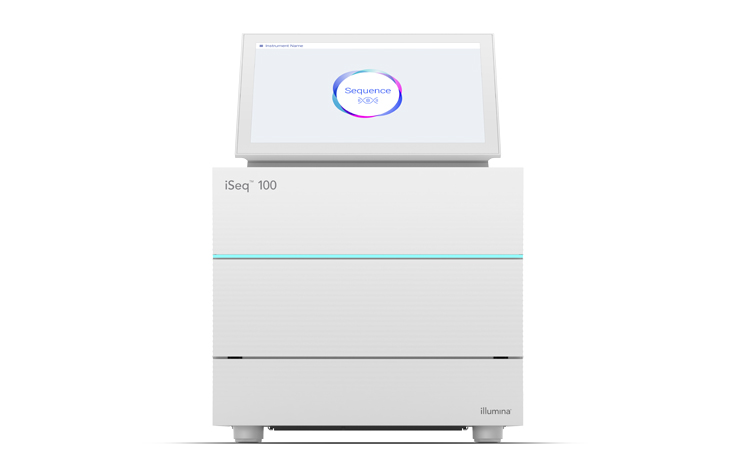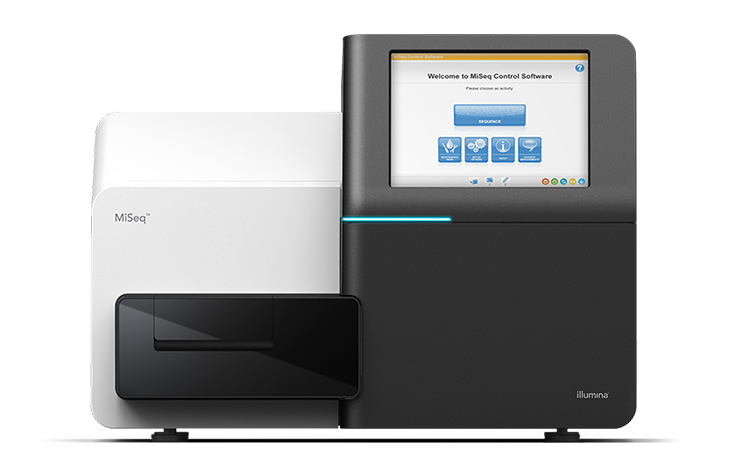Coronavirus Sequencing

How NGS Helps Fight COVID-19
Next-generation sequencing (NGS) provides an effective, unbiased way to identify new coronavirus strains and other pathogens without prior knowledge of organisms1. Growing concern over fast spreading, novel variants of the SARS-CoV-2 coronavirus, such as the Alpha (B.1.1.7), Beta (B.1.351), Gamma (P1, Brazil), Delta (B.1.617.2) and Omicron (B.1.1.529) strains, highlights the need for more sequencing to detect mutations quickly and prevent the spread of new strains. Sequencing was used to identify the novel coronavirus causing COVID-19 (SARS-CoV-2) early in the outbreak2. NGS continues to provide public health officials, vaccine and drug developers, and researchers with critical evidence, allowing labs to:
- Track the transmission routes of the virus globally
- Detect mutations quickly to prevent the spread of new strain types
- Identify viral mutations that can affect vaccine potency or avoid detection by established molecular diagnostic assays
- Screen targets for possible COVID-19 therapeutics
- Identify and characterize respiratory co-infections and antimicrobial resistance alleles
Surveilance of SARS-CoV-2 for Any Lab
The COVIDSeq Assay (96 samples) enables labs of any size to detect SARS-CoV-2 virus mutations and provides critical information to prevent the spread of new strain types.Compare Coronavirus NGS Methods
| Surveillance of SARS-CoV-2 | Detection and Surveillance of Respiratory Pathogens | Detect Novel Virus | |
|---|---|---|---|
| Testing Needs | Amplicon
Illumina COVIDSeq Test (RUO) COVIDSeq Assay |
Target Enrichment | Shotgun Metagenomics |
| Speed & Turnaround Time | |||
| Scalable & Cost-Effective | |||
| Identify Novel Pathogens | |||
| Track Transmission | |||
| Detect Mutations | |||
| Identify Co-Infections & Complex Disease | |||
| Detect Antimicrobial Resistance |
Adequately meets laboratory testing needs
Partially meets laboratory testing needs
More About Coronavirus Sequencing Methods
Amplicon Sequencing
Detect the presence of the SARS-CoV-2 coronavirus by sequencing specific regions of the viral genome. This method involves analyzing genomic regions of interest with ultra-deep sequencing of PCR amplicons.
Target Enrichment Sequencing
Detect and characterize coronaviruses, flu viruses, and other pathogenic respiratory tract organisms, as well as associated antimicrobial resistance alleles. These insights can help researchers monitor respiratory infections and optimize infection control strategies. This method captures genomic regions of interest via hybridization to target-specific probes.
Shotgun Metagenomics
Comprehensively sequence all organisms in a given sample and identify novel pathogens such as coronaviruses. This NGS method can help accelerate outbreak investigations and support development of new laboratory tests.
Featured SARS-CoV-2 Amplicon Sequencing Workflows
Featured Enrichment & Metagenomics Workflows
Frequently Purchased Together
COVID-19 NGS Webinars
Genomic Applications in the Fight against SARS-CoV-2
Two leading infectious disease researchers discuss how genomic sequencing technologies are tackling the COVID-19 pandemic.
Access WebinarClinical Metagenomics Analysis for SARS-CoV-2
The COVID-19 pandemic has underscored the need for tools to detect and monitor emerging pathogens like SARS-CoV-2. NGS led to the initial detection of the coronavirus, and is accelerating test and vaccine development.
Access WebinarNGS for SARS-CoV-2 Detection and Monitoring
Learn about the broad applicability of NGS for responding to the COVID-19 pandemic, from initial detection and characterization of the novel coronavirus to monitoring, surveillance, and diagnostic detection.
Access WebinarCoronavirus Sequencing Application Notes
Detect Respiratory Pathogens & Antimicrobial Resistance
Rapid target enrichment sequencing for broad detection of respiratory pathogens (including SARS-CoV-2, flu viruses, and fungi) and associated antimicrobial resistance alleles.
Respiratory Pathogen ID/AMR Workflow Application NoteAnalytical Performance of the Respiratory Pathogen ID/AMR Workflow Application Note
Find and Characterize Respiratory Viruses
A rapid target enrichment sequencing workflow for highly sensitive detection and characterization of coronaviruses, flu viruses, and other respiratory viruses.
Read Application NoteRapidly Detect Respiratory Viruses with the Illumina MiniSeq System
MiniSeq Rapid reagents reduce sequencing run times to < 5 hours, allowing fast detection of coronaviruses and other respiratory viruses.
Read Application NoteCoronavirus Software Tools
These tools accelerate coronavirus sequencing data analysis, simplify sample tracking, facilitate host response studies, and make it easier for scientists to contribute to public databases.FAQs
Building a State-of-the-Art Clinical Research Sequencing Lab in Israel
Genomics center established in record time to combat COVID-19 pandemic.
Read ArticleCOVID-19 NGS News
Paving the Way with COVID-19 Sequencing
A Utah Public Health Lab director discusses how they've expanded their NGS operations in an effort to zero in on SARS-CoV-2 outbreak clusters and establish an infrastructure for future pandemics.
Read ArticleCreating an Australian COVID-19 Tracking System
In a groundbreaking initiative, public health labs use Illumina technology to sequence the viral genomes of all positive COVID-19 tests in Australia and track COVID-19 across the country, rather than state by state.
Read ArticleAccelerating COVID-19 Host Response Research
A collaborative environment leveraging BaseSpace Correlation Engine helps COVID-19 researchers validate hypotheses around important pathways, biomarkers, and potential drug candidate leads.
Read ArticleImproving COVID Sequencing in a Changing Pandemic
How Aegis Sciences moved with the mutations, expanded capacity, and became one of the largest COVID sequencing operations in the world.
Read ArticleTechnical Tips
Decontaminating Illumina Sequencers for Novel Coronavirus
In keeping with recommendations from the United States CDC and World Health Organization, Illumina recommends this procedure for decontaminating NGS instruments suspected or known to have come in contact with the novel coronavirus SARS-CoV-2 (2019-nCoV).
Read BulletinImpact of Ammonium-Based Cleaning Products on Sequencing Run Performance
Use of ammonia-based cleaners and sanitizing products (frequently utilized to clean labs during the COVID-19 pandemic) in proximity to sequencing run setup can result in decreased sequencing run performance metrics. View tips on how to avoid these issues.
Read BulletinShotgun Metagenomics Supporting Products

Illumina Stranded Total RNA Prep with Ribo-Zero Plus
Rapid library preparation from a broad range of sample types for studying the coding and non-coding transcriptome with unparalleled study flexibility.
rRNA Depletion Kit
The stand-alone Illumina Ribo-Zero Plus kit allows for ribosomal RNA removal in human, mouse, rat, and bacterial samples.

NextSeq 2000
Groundbreaking benchtop sequencers allow you to explore new science across a variety of current and emerging applications, with higher efficiency and fewer restraints.
Target Enrichment Supporting Products

iSeq 100
The iSeq 100 system leverages the speed and affordability of complementary metal-oxide-semiconductor (CMOS) technology and the accuracy of sequencing by synthesis (SBS) chemistry.
View Product
MiSeq
The MiSeq benchtop sequencer enables targeted and microbial genome applications, with high-quality sequencing, simple data analysis, and cloud storage.
View Product
Illumina RNA Prep with Enrichment
Illumina RNA Prep with Enrichment is the fastest and most flexible targeted sequencing solution for RNA in the Illumina library prep portfolio.
View ProductHow Sequencing-Based Surveillance Helps Fight COVID-19
Phil Febbo, MD, Chief Medical Officer of Illumina, discusses five main ways in which next-generation sequencing-based surveillance is used to fight the SARS-CoV-2 coronavirus.
Read ArticleWant to talk to someone about COVID-19 sequencing solutions for your lab?
Contact us today
Related Solutions
Shotgun Metagenomics
Comprehensively sequence all organisms present in a given complex sample. Identify novel pathogens or detect microbial abundance in various environments.
Learn MoreTarget Enrichment
Target enrichment through hybrid–capture methods allows for highly sensitive detection, without requiring the high read depth needed for shotgun metagenomic sequencing.
Learn MoreAmplicon Sequencing
Simultaneously assess a few to hundreds of genes or targets in a single run with this highly targeted multiplex PCR-based sequencing approach.
Learn MoreReferences
- Bulcha B. Review on viral metagenomics and its future perspective in zoonotic and arboviral disease surveillance. J Biol Agr Healthc. 2017; 7(21): 35–41.
- A Novel Coronavirus from Patients with Pneumonia in China, 2019. N Engl J Med. 2020; 382(8): 727–733.